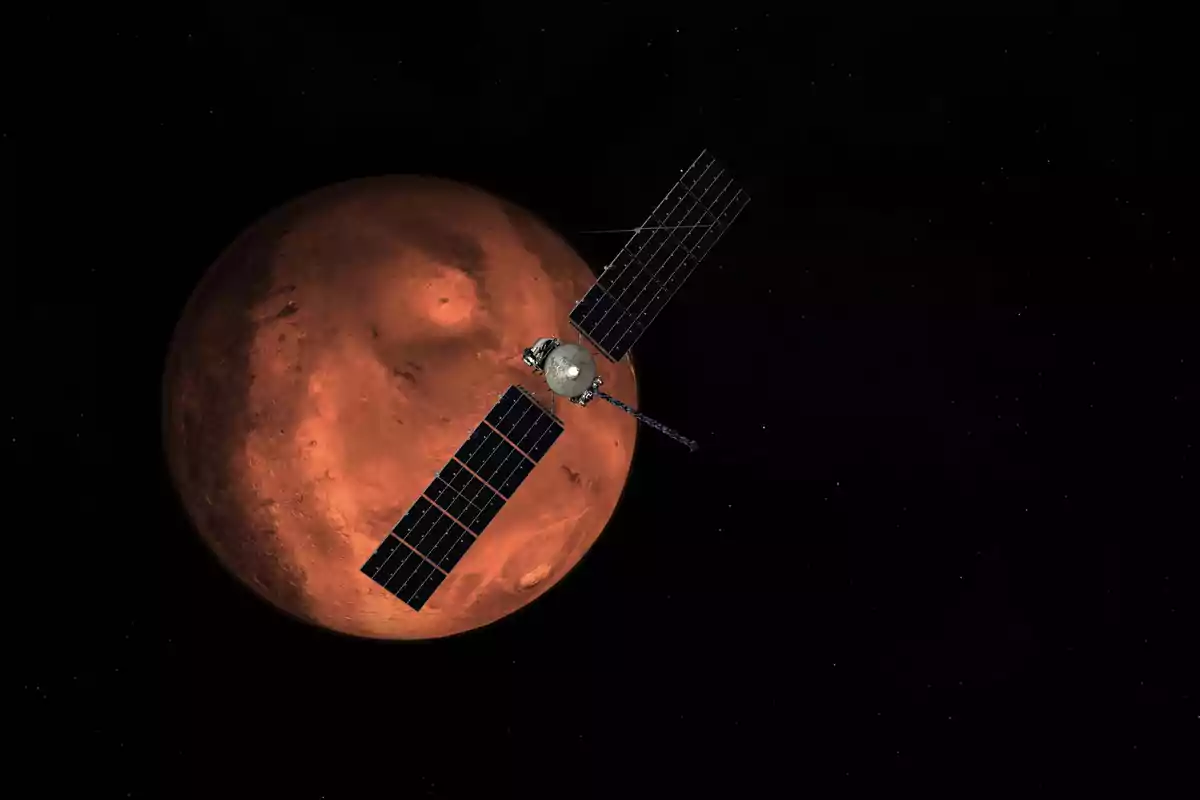The news that has brought great joy to both Elon Musk and NASA has finally been confirmed. Recent scientific advances have opened a door that once seemed distant, but is now much closer to becoming a reality. This discovery could be the key piece for the most ambitious space projects related to the exploration and colonization of Mars.
For years, the scientific community has sought an effective solution to generate oxygen in environments as hostile as the red planet. This problem is essential, since without a constant supply of oxygen, life could not be sustained outside Earth. That's why expectations around this discovery have been very high.

The biopaint that will change space exploration
The secret behind this shared happiness between Elon Musk, leader of SpaceX, and NASA lies in a biotechnological development that has exceeded all previous expectations. It is an innovative biopaint called Green Living Paint, created by a team from the University of Surrey. This paint contains microorganisms capable of performing photosynthesis, generating oxygen and absorbing carbon dioxide even under extreme conditions.
Made with bacteria extracted from desert environments, Green Living Paint incorporates the cyanobacterium Chroococcidiopsis cubana, an exceptionally resilient species. These bacteria tolerate dehydration, ultraviolet radiation, and other adverse factors that simulate Martian conditions. During the experiments conducted, it was proven that they released up to 0.014 oz. (0.4 g) of oxygen per 0.035 oz. (1 g) of biomass per day, even after being dried and later rehydrated.

Sustainable innovation for extreme environments
Dr. Suzie Hingley-Wilson, a microbiologist involved in the project, has explained that this development is especially valuable given the increase in greenhouse gases and the scarcity of water resources. "We need sustainable materials that reduce water use and also help mitigate environmental impact," she stated. The biopaint is therefore presented as a viable solution to generate oxygen in future space colonies, where access to water will be limited.
In comparative tests, another type of freshwater cyanobacterium failed to produce oxygen under the same circumstances, which confirms the unique suitability of Chroococcidiopsis cubana. This resistance to extreme conditions reinforces its potential for space applications, as it will allow keeping oxygen production without the need for complex mechanical systems.
Biotechnology to build a future on Mars
The financial support from Leverhulme Trust has been essential for this multidisciplinary project to move forward. Joseph Keddie, a specialist in soft matter physics at the University of Surrey, has explained that thanks to this support they have been able to develop a biopaint useful for space exploration. One of the goals is to use this technology to create habitat walls on Mars capable of producing oxygen autonomously, without the need for complex mechanical systems.
This technological breakthrough represents a milestone for space exploration, since for more than a month, Green Living Paint kept its efficiency without losing its capabilities. Simone Krings, lead researcher of the study, has highlighted that the resilience of these bacteria to conditions similar to those on Mars makes them ideal candidates to colonize the red planet. This innovation offers a sustainable and scalable solution that could usher in a new era beyond Earth, which is the reason for the joy of Elon Musk and NASA.

